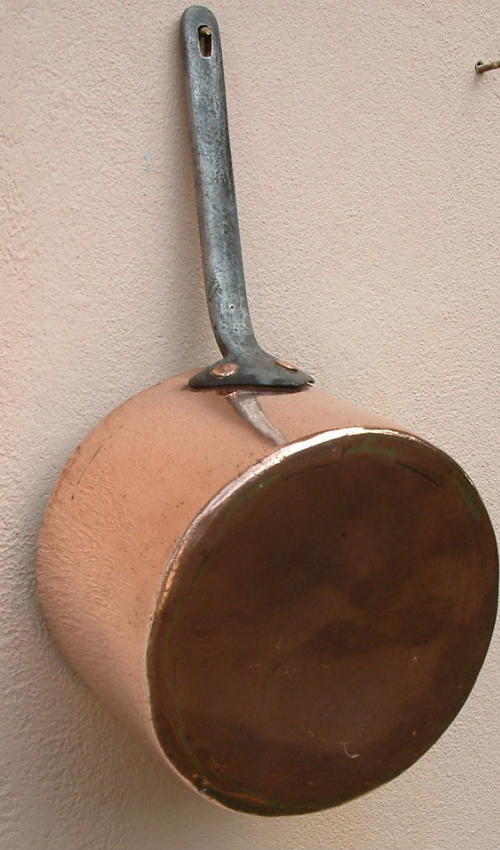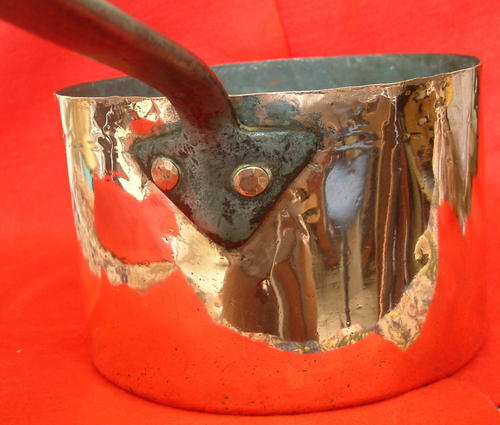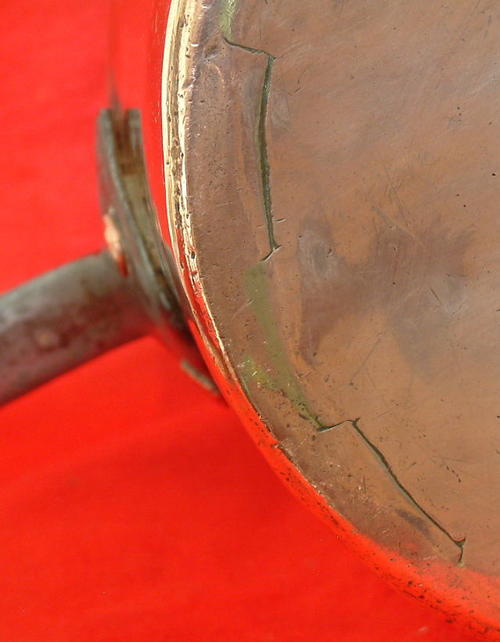Victorian heavy English Copper Pot Circa 1830-1860 Ref. CC3
Check my rate
| Main centres: | 1-3 business days |
| Regional areas: | 3-4 business days |
| Remote areas: | 3-5 business days |
Product information
Victorian heavy English Copper Pot Circa 1830-1860 Ref. CC3
On offer is this superb example of a hand-made 'dove-tailed' seamed English copper Pot, dating from around the 1830's to the 1860's, with a tinned interior. Although there is no manufacturers stamp on the pot, dating it is not that difficult a procedure. Dovetailing is our first, and most important clue. The seams go up one side of the piece and circle around the bottom. When making a saucepan, the coppersmith would first cut a rectangle of copper to form the sides of the pot. He would then hammer the edges of the two short sides until they were about half as thick as the rest of the piece. Next, he cut slits on one side (or, in some cases, on both sides) and folded up every other tab. The two sides were then fit together, the tabs flattened and hammered, and the seam brazed (using molten brass like glue) for a perfect seal.
After the sides of a pot were joined, creating a cylinder, the floor of the pot was fashioned and attached. The smith would start by turning in the lower edge of his cylinder, making a lip about an inch wide. He did this by hammering it over a form. Â Once the lower edge was successfully turned in, the next step was to cut a circle of copper to make the bottom of the pot. The edges of the circle would be dovetailed and joined to his cylinder. Dovetailing requires extraordinary skill acquired through long, dedicated practice. It is so difficult that you can generally assume a dovetailed pot really is an antique. It would hardly be worth the effort to fake it today.
Next we come to the handle. Handles were originally made of wrought iron or, at a later stage, cast iron. Steel, copper and brass handles usually signify a later date of manufacture. Â The pot above has a wrought iron handle, attached by two massive copper rivets which would also have been handmade to a base shaped like an arrow. This was typical of English wares, the French favoured more of an oval shaped iron base held with three rivets. Â The marks of the hammer blows on the rivets are still evident inside the pot.Â
Look at the handle carefully - it has a 'keyhole' shaped hole at the  end, typical of English manufacture.  French pots can be distinguished by their handles having a tear-drop hole.Â
Lastly, careful examination of the handle will reveal a stamped 'C' near the end. This would have been the owner's initial. Â Although these copper pots were all 'tinned' internally, after much use, the tinning wore through, and, the pot would have been sent back to a coppersmith to be re-tinned. Â The initials helped to identify the pot's owner.
The pot offered above stands 13.5 cm high with a diameter of 20.5cm. The handle is also 20.5cm in length and the total weight of the pot is 1,920 grams!! The copper is 2mm thick. The tinning is worn, but, do remember, it can be re-tinned and used as your special cooking pot!

Price R700.00 Â Â
Post R70.00Â
Â
Terms: We offer a strict three-day approval period from the date the parcel reaches you. Refunds/credits are based on the cost of the article, NOT including delivery charges. Please advise us within this period whether you would like to return any article for a refund/credit. Although we pride ourselves in our packing, the buyer remains responsible for loss, non-arrival or damage to goods being sent to, or returned.Â
Â



